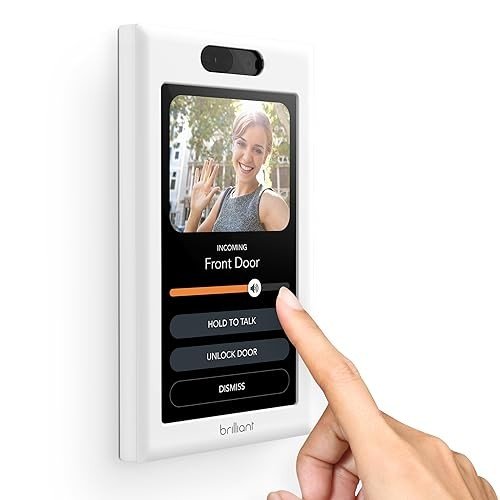Decorative Lighting in the UK: A Comprehensive Guide
In the last few years, decorative lighting has actually taken centre stage in interior decoration across the UK. Property owners and designers alike are increasingly identifying the importance of lighting not just for performance, but likewise for aesthetics. This article looks into the various kinds of decorative lighting offered, the current trends in the UK market, and practical suggestions for selecting and setting up the best lighting to boost numerous spaces in homes.
Understanding Decorative Lighting
Decorative lighting incorporates a broad series of lighting fixtures that serve to improve the charm of an area while likewise offering illumination. This kind of lighting includes a touch of design, character, and warmth to environments, creating state of minds and highlighting architectural functions. Buy Lamps Online UK in between decorative lighting and other kinds of lighting, such as task or ambient lighting, is that decorative lighting mostly aims to develop visual appeal.
Kinds Of Decorative Lighting
There are numerous types of decorative lighting that homeowners can pick from, including:
- Chandeliers: Often the focal point of dining locations or grand entrances, chandeliers are detailed lights with multiple bulbs and artistic designs.
- Pendant Lights: Suspended from the ceiling, pendant lights are available in different styles, making them suitable for kitchens, dining areas, or living rooms.
- Wall Sconces: Mounted on walls, these fixtures can offer ambient lighting or spotlight particular areas, such as art work or architectural information.
- Table Lamps: Used on night table, desks, or side tables, they can range from minimalist designs to elaborate artistic pieces.
- Floor Lamps: These flexible fixtures can fill empty corners while supplying both ambient and task lighting.
- Fairy Lights: String lights or fairy lights include a whimsical touch to both indoor and outdoor areas, best for producing an inviting environment.
- Neon Signs: An emerging trend, neon signs add a modern, metropolitan flair and are popular for home bars, recreation rooms, and personal spaces.
Existing Trends in Decorative Lighting
The UK lighting market has actually witnessed numerous evolving patterns that show consumer choices and developments in technology. Some of the popular trends consist of:
- Sustainable Lighting: Eco-friendly alternatives, such as LED lighting, are increasingly favoured for their energy efficiency and lower carbon footprint.
- Smart Lighting: Integration of smart technologies allows homeowners to control their lighting through mobile phones or voice assistants, providing benefit and flexibility.
- Vintage and Industrial Designs: The rustic beauty of vintage and industrial styles stays in vogue, as they can effortlessly mix with both modern and traditional interiors.
- Geometric Shapes: Light fixtures including vibrant geometric shapes contribute to a contemporary aesthetic that appeals to modern homeowners.
Selecting the Right Decorative Lighting
When picking decorative lighting, it is essential to think about the following elements:
- Purpose: Determine the primary purpose of the lighting. Is it to develop a welcoming environment, highlight artwork, or supply functional lighting for activities?
- Design: Carry out research to make sure that the selected lighting matches the existing design and shows personal style choices.
- Size: Consider the scale of the space. Large fixtures can overwhelm little rooms, while small choices might appear lost in bigger areas.
- Positioning: Think seriously about where the fixtures will be set up, ensuring they are accessible and successfully illuminate the intended areas.
- Energy Efficiency: Opt for energy-efficient LEDs whenever possible to minimize energy costs and add to sustainability.
Installing Decorative Lighting
Once decorative lighting alternatives have been picked, appropriate installation is key to attaining the preferred impact. Here are some standards to follow:
- Mounting Height: Ensure that chandeliers and pendant lights hang at an appropriate height. They ought to offer adequate light without blocking views or movement.
- Layered Lighting: Incorporate different layers, including task, ambient, and decorative lighting, to develop balance and depth within an area.
- Dimmers: Installing dimmer switches can offer flexibility in adjusting light intensity based on activities and state of mind.
- Professional Assistance: For complicated setups, it may be beneficial to work with an expert electrical expert to make sure security and compliance with regional guidelines.
Decorative lighting provides a fantastic opportunity for homeowners in the UK to reveal their design while improving the functionality of their areas. With a variety of options available, careful factor to consider of aspects such as design, size, and positioning can result in sensational results. As trends continue to evolve, people can stay on the cutting edge of decorative lighting design.
Often Asked Questions (FAQs)
Q: What is the distinction in between decorative lighting and ambient lighting?A: Decorative lighting is mainly focused on visual appeal, while ambient lighting supplies basic illumination for an area. Q: How can I select the right size chandelier for my dining room?A: A typical general rule is to add the measurements of the room(
in feet)and utilize that number as the size of the chandelier(in inches ). Q: Are LED lights suitable for decorative lighting?A: Yes, LED lights are widely utilized
due to their energy performance, long life-span, and ability to come in numerous styles. Q: Is it necessary to speak with a professional for installation?A: While some setups can be done DIY, it's recommended to
consult an expert for complicated setups to make sure security and
compliance. Q: What materials are popular for decorative lighting fixtures in the UK?A: Common materials consist of glass, metal, fabric, and wood, each adding to various styles and visual appeals. By understanding the various types of decorative lighting readily available, remaining informed about the current patterns, and following vital guidelines for choice and setup, anyone can change their living spaces into beautiful sanctuaries of light.

